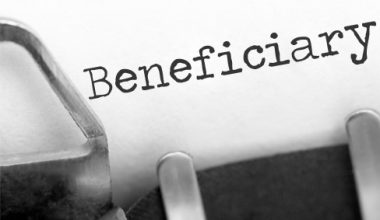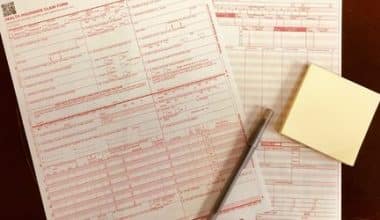Buying a home is a major accomplishment, but it is also a significant financial investment. Homeowners insurance is one of the finest methods to protect your new investment. The HO-3 Special Form policy is the most frequent type of homeowners insurance policy. HO-3 policy coverage covers both your home and your personal items. It is one of the various types of homeowners insurance. Knowing the distinctions will assist you in selecting the appropriate type of homeowners insurance to provide financial coverage in the event of a covered loss.
What is an HO-3 Homeowners’ policy?
An HO3 policy is insurance jargon for a basic homeowners insurance policy. It is, in essence, a contract between you and your insurer. You agree to pay a monthly cost (your premium) in exchange for them having your back when things don’t go as planned.
HO-3 Policy Coverage Features
| Coverage | Typical limit |
| Dwelling | Rebuild cost of home |
| Other structures | 10% of dwelling limit |
| Personal property | 50% of dwelling limit |
| Loss of use | 10% of dwelling limit |
| Personal liability | Your choice |
| Medical payments | Your choice |
Homeowners’ insurance policy forms written by the Insurance Services Office (ISO), a corporation that provides data and consulting services to the insurance industry, are generally used for HO-3 plans. However, just because a policy is based on the ISO HO-3 standard does not mean that it adheres to those rules perfectly, nor do various insurers give the exact same coverage in their individual HO-3 policy.
Customers should always discuss a prospective HO-3 homeowners policy with their insurance agent to ensure they fully understand the limits of the coverage.
What Does an HO-3 Policy Cover?
Your home and personal belongings are not the only things covered by an HO-3 insurance policy. Take a look below to learn more about how this policy form can protect you and your possessions.
#1. Dwelling coverage
Your dwelling coverage extends to your home and any associated structures, up to the policy’s replacement cost on an open peril basis. Refer to this list for a list of risks that your HO-3 policy will not cover. It’s crucial to understand that the replacement cost and market value of your home are not the same things. The value of real estate and land is included in the market value of your home. The replacement cost is only for reconstructing our home if it is damaged.
#2. Coverage of other structures
Other structures, such as a detached garage or fencing, are usually covered at 10% of your dwelling coverage maximum.
#3. Liability Coverage
Homeowners’ liability insurance, like car insurance coverage, protects you if you are at fault for someone else’s property damage or bodily injury. We propose increasing your personal liability coverage limits to protect any assets you may have. Unlike liability coverage on your auto insurance policy, HO-3 homeowners liability coverage is typically inexpensive.
#4. Personal Properties
Personal property coverage covers your clothes, furniture, television, and other valuables. Only precisely stated incidents are covered for your personal property (named perils). If you want an open peril policy for your personal belongings, you should check into an HO-5 policy (or the equivalent from your insurer).
Personal property is often insured for its real cash worth or replacement cost. Actual cash value considers wear and tear when calculating your payout, whereas replacement cost coverage pays the full cost of replacing your belongings.
When establishing personal belongings coverage, sub-limits must be considered. The amount of coverage for precious belongings, such as jewelry or fine art, may be limited by the insurance carrier. The following are some common sub-limits.
| Sub-limit | Property | Limitations |
| $200 | Money, Gold, Coins | |
| $1,500 | Jewelry, watches, furs | Theft-only |
| $1,500 | Watercraft, trailers | Theft-only |
| $2,500 | Firearms | |
| $2,500 | Silverware | |
| $2,500 | Business property | On-premises |
| $500 | Business property | Off-premises |
| Varies | Electronics |
If the value of any of your goods exceeds the monetary sub-limits, consider adding more coverage to your policy through an endorsement or rider. This will boost the overall coverage of a category. A jewelry endorsement, for example, would boost the level of jewelry coverage for all of your valuables. If you own a significant piece of jewelry, such as an engagement ring, look into a scheduled endorsement as a coverage alternative.
A scheduled endorsement is limited to a single item. This object will very certainly need to be appraised, and it will ensure that you are adequately covered in the case of a loss.
#5. Extra living expenditures
Your additional living expenses coverage, often known as loss of use, reimburses you for certain expenses if your home becomes uninhabitable as a result of a covered loss. You’re insured up to the policy’s maximum.
#6. Other people’s medical expenses
Accidents occur. If a visitor to your house is injured while on your property, your medical payments coverage will cover their medical expenses up to the policy limit.
- Payments and medical bills
- Surgical expenses
- X-rays are expensive.
- Dental treatments
- Fees for ambulances and hospitals
- Nursing assistance
- Artificial limbs
- Services for the dead
What Perils does an HO-3 Policy Cover?
An HO-3 policy covers your home and personal property separately. Except in the cases specified excluded, the physical structure of your home and any other structures – fences or a detached garage — are covered in all instances. Because your property is a significant investment, you should insure it against all risks.
In the event of a claim, you only need to show your homeowner’s insurance carrier that the damage was not caused by one of the excluded risks. In this sense, the burden of proof is substantially lower. This can drastically speed up the claims procedure with your insurance company. Let’s take a closer look at the various coverage options available with an HO-3 policy.
- Open Peril: Unless otherwise specified, open danger insurance protects you against all claims. An open peril policy typically excludes the following:
- Pipes and systems in abandoned houses freeze
- Ice and water weight damage to foundations or pavements
- Theft from an under-construction home
- Vandalism to unoccupied houses
- Corrosion, latent flaws, industrial smoke, pollution
- Wear and tear, settling
- Pests, pets, and other animals
- Weather circumstances that worsen loss from other prohibited causes
- Actions by the government and associations
- Construction, design, and maintenance flaws
- Named peril: Your personal items are only protected against the specific hazards listed in the policy. Among the 16 commonly covered dangers are:
- Fire or lightning
- Windstorm or hailstorm
- Aircraft-caused damage
- Explosions
- Riots and civil unrest
- Smoke harm
- Vehicle-related damage
- Theft
- Vandalism
- Objects that fall
- Volcanic eruptive activity
- The weight of snow, ice, or sleet causes damage.
- Overflowing water from plumbing, heating, or air conditioning
- Cracking, tearing, and burning of the water heater
- Electrical current damage
- The freezing of pipes
What Does an HO-3 Policy Not Cover?
Despite its popularity, the HO-3 homeowners’ policy has a drawback: named-peril coverage for personal items. While you are still protected against many risks, you must bear the burden of proving that the loss was caused by one of the covered claims. This can slow down the claims procedure depending on the type of claim and individual circumstances.
Exclusions from the HO-3 policy
There are a few more exclusions to note. Floods and earthquakes are two of the most common perils that many insurers refuse to cover. Most homeowners who want to protect themselves against these risks will need to purchase a separate earthquake or flood insurance policy.
Take a look at the list below to learn which risks are usually excluded from any house insurance policy.
- Flood
- Hurricane
- Mold*
- Vandalism to unoccupied houses
- Normal wear and tear
- Pets cause property damage
- Earthquakes**
- Building codes and comparable legislation must be enforced.
- Intentional behavior
- Neglect
- Acts of the government
*Some insurance allows you to add limited mold damage coverage.
**If relevant, you can add earthquake insurance through your insurance provider.
Why Should You Get HO3 Insurance?
For starters, if you have a bank loan or mortgage, you must have homeowners insurance. This is due to the fact that it protects both you and the bank’s investment by fixing damage to your home. Aside from that, purchasing insurance for one of the biggest investments you’ll ever make is a no-brainer.
Your HO3 policy may also cover you for minor, all-too-common occurrences such as your laptop being stolen in a coffee shop, your pipes bursting in the winter, or your belongings catching fire owing to bad wiring.
Even if you don’t file a claim, having home insurance can take away any fear or concern that something bad might happen. It gives you peace of mind, knowing you’re protected even in the worst-case scenario.
Where do I go to get HO-3 insurance?
HO-3 homeowners insurance is available from the majority of private insurance firms. You can obtain insurance from either a national or a local supplier. If you currently have auto insurance, you may be eligible for a bundle discount if you purchase home insurance from the same company.
What distinguishes an HO3 Policy From Other Types of Homeowners Insurance?
HO3 policies are popular because they provide a perfect blend of dependable, inexpensive coverage against a wide range of risks. However, depending on your coverage requirements and the sort of property you own, a different type of home insurance may be a better fit.
Your insurer can help you determine your needs and the appropriate sort of policy for you. We’ve highlighted what distinguishes various forms of home insurance coverage from an HO3.
- HO1: For your home, HO1 plans only provide named-perils coverage.
- HO2: HO2 insurance only provides named-peril coverage for your home and personal property.
- HO4: HO4 coverage (renter’s insurance) covers personal property and liability but not the home itself. Coverage D is also included in some HO4 insurance.
- HO5: HO5 insurance is similar to HO-3 policy in that they provide higher limits and cover a wider variety of dangers. They are typically recommended for new residences.
- HO6: HO6 policies are similar to HO3 policies, but they are designed exclusively for condominiums, and the dwelling coverage they provide is limited to the interior of the home.
- HO7: HO7 insurance is similar to HO3 policies, but they are just for mobile homes.HO8
- HO8: HO8 insurance is similar to HO3 policies in that they cover older or historically significant homes.
HO-3 vs. HO-4 Policy
The distinction between HO-3 and HO-4 policies is simple. An HO-3 policy is a standard homeowners policy, whereas an HO-4 policy is a renters policy.
An HO-4 policy protects a renter’s belongings while also providing liability coverage. In some cases, it may also include coverage for additional living expenses. If a renter is forced to relocate because of a covered loss, supplementary living expense coverage might help them pay for a hotel or temporary rental. HO-4 insurance does not cover the structure of the building you rent. Instead, the landlord insures the structure with their own policy.
HO-3 vs. HO-5 Policy
Because they are both homeowners’ policies, comparing HO-3 and HO-5 policies is simpler. To keep these policies straight, think of the HO-5 policy as an enhanced version of the HO-3 policy. An HO-5 policy covers both your structure and your belongings from open perils. An HO-3, on the other hand, covers your structure under open perils while also providing named-perils coverage for your belongings. Furthermore, an HO-5 policy may provide additional coverage for valuable objects such as jewelry, but this is not always the case.
In other words, an HO-3 imposes greater coverage constraints on your belongings. This usually means that an HO-3 policy is less expensive than an HO-5 policy.
Conclusion
HO-3 policies are among the most popular among homeowners in the United States. An HO-3 protects the structure of your home against all threats and saves those specifically identified.
In general, the only disadvantage of HO-3 coverage is the lack of specified peril coverage for your personal items. This exposes your personal belongings and places the onus of proof on you in the event of a claim. If you’re concerned about your personal property or want more comprehensive coverage options, you should look into an HO-5 policy. On an open-peril basis, this will cover both your personal belongings and your home. This is the most thorough coverage accessible.
Keep in mind that house insurance carriers’ coverage options and pricing may vary. It is always beneficial to search around for HO-3 coverage — or any other form of coverage.
What Is Hoa Insurance?
The homeowners association (HOA) of your condominium development is the entity that is liable for having a master insurance policy in order to protect the common areas of the property. Your HOA dues, whether they are paid monthly or annually, typically include a contribution toward the cost of a master policy. Your complex is protected against losses incurred as a result of accidents or injuries that take place in “common spaces,” such as meeting rooms, swimming pools, tennis courts, and other communal areas. This coverage is provided by the master policy. Coverage limitations and exclusions on your HOA master insurance policy will differ depending on your condo association. These differences might be helpful in determining what coverage is required for your individual condo insurance policy because they indicate what is not covered.
HO-3 Policy FAQs
What is the difference between HO3 and ho5?
Personal property under an HO-3 policy is solely covered for named hazards, but personal property under an HO-5 policy is covered for all perils. In layman’s terms, this means that an HO-5 insurance policy is more comprehensive and covers personal property loss in all circumstances save those specifically excluded from your policy.
Is HO3 or HO2 better?
HO3 is better. The HO2 offers more security than the HO1, but not as much as the HO3.
What is the difference between an HO3 and HO8 policy?
Both HO3 and HO8 policies are fundamental policies. The primary distinction is that an HO3 is an open perils policy, whereas an HO8 is a named perils policy. An open perils policy operates in the opposite manner as a named perils policy.
Related Articles
- HO5: Overview, Policy forms, Charts & Insurance Guide
- NEW HOMEOWNERS TAX CREDIT: What It is And The Eligibility
- BEST POLICY MANAGEMENT SOFTWARE: 2023 Reviews
- Form 1098 Mortgage: The Interest Statement
- PERSONAL LIABILITY COVERAGE: Definition, Cover & How Much You Need






